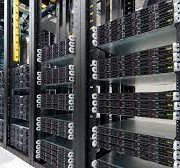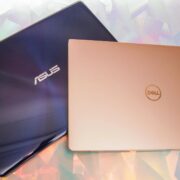In today’s digital age, having reliable and efficient servers is crucial for the success of any business. Servers play a vital role in managing and storing data, hosting websites, running applications, and facilitating communication within an organization. However, with the multitude of options available on the market, purchasing and evaluating servers can be a daunting task. This comprehensive guide will walk you through the key considerations and steps to ensure you make informed decisions when acquiring servers for your business.
1. Assess Your Business Needs
Before diving into the world of servers, it’s important to assess your business needs. Consider factors such as the size of your organization, the nature of your workloads, and your growth projections. Ask yourself the following questions:
- How many users will be accessing the server simultaneously?
- What type of applications will the server be running?
- How much storage capacity do you require?
- What are your future scalability requirements?
Before diving into the world of servers, it’s important to assess your business needs. Consider factors such as the size of your organization, the nature of your workloads, and your growth projections. Ask yourself the following questions:
2. Choose Between Physical and Virtual Servers
The next decision you’ll need to make is whether to opt for physical servers or virtual servers. Here’s a brief comparison of the two:
- Physical Servers: These are dedicated machines that provide high performance and security. They are ideal for resource-intensive applications and businesses with strict compliance requirements. Physical servers offer full control and can be customized to meet your specific needs.
- Virtual Servers: Also known as virtual machines (VMs), these are software-based servers that run on a physical server. Virtual servers allow for greater flexibility, scalability, and cost-efficiency. They are well-suited for small to medium-sized businesses that need to allocate resources dynamically.
Consider your budget, scalability requirements, and IT infrastructure when deciding between physical and virtual servers.
3. Determine Server Specifications
- Processor (CPU): Look for servers with modern processors that offer ample processing power and multiple cores. Consider the clock speed, cache size, and the number of cores to ensure optimal performance.
- Memory (RAM): The amount of RAM influences the server’s ability to handle multiple tasks simultaneously. Consider the requirements of your applications and ensure you have enough memory to avoid performance bottlenecks.
- Storage: Evaluate your storage needs, including the required capacity and performance. Consider whether hard disk drives (HDDs) or solid-state drives (SSDs) are more suitable for your workload. Additionally, think about redundancy options such as RAID configurations for data protection.
- Networking: Assess your network requirements, including the number of network interfaces, supported network speeds (e.g., 1Gbps, 10Gbps), and any specific networking features required for your applications.
- Operating System: Determine which operating system (OS) is compatible with your applications and aligns with your organization’s preferences and expertise. Common choices include Windows Server, Linux distributions (e.g., Ubuntu, CentOS), or specialized server OSes.
4. Consider Management and Monitoring Capabilities
Efficient management and monitoring of servers are essential for maintaining optimal performance and identifying potential issues. Consider the following aspects:
- Remote Management: Look for servers with remote management capabilities, such as out-of-band management (e.g., Intelligent Platform Management Interface – IPMI) or remote access cards (e.g., Integrated Lights Out – iLO, Integrated Dell Remote Access Controller – iDRAC). These features allow you to access and control the server even if the main operating system is unresponsive.
- Monitoring and Alerting: Check whether the server includes monitoring tools or supports third-party software for tracking server health, and resource utilization, and sending proactive alerts in case of anomalies or failures.
- Automation and Orchestration: Evaluate if the server supports automation and orchestration frameworks, such as Ansible or Puppet. These tools can help streamline server provisioning, configuration management, and deployment processes.
5. Security and Redundancy Considerations
Data security and server availability are paramount for any business. Ensure your chosen servers address these concerns:
- Physical Security: Assess the physical security features of the server, such as lockable chassis, intrusion detection mechanisms, and tamper-evident designs.
- Redundancy and High Availability: Consider redundant components, such as power supplies and network interfaces, to minimize downtime in case of failures. Additionally, explore options for high-availability configurations, such as clustering or failover solutions.
- Data Encryption: Evaluate the server’s ability to encrypt data at rest and in transit. Features like self-encrypting drives (SEDs) and secure communication protocols (e.g., SSL/TLS) can enhance data security
6. Evaluate Vendor Support and Warranty
When investing in servers, it’s important to consider the vendor’s support and warranty offerings:
- Vendor Reputation: Research the reputation of server vendors, read reviews, and assess their track record in terms of quality, reliability, and customer support.
- Warranty and Service Level Agreements: Review the warranty period and the available service level agreements (SLAs) for maintenance, repairs, and technical support. Consider the costs and the level of support that aligns with your business requirements.
7. Budget and Total Cost of Ownership (TCO)
Finally, consider your budget and the total cost of ownership (TCO) when selecting servers. Take into account not only the initial purchase cost but also ongoing expenses like power consumption, cooling, maintenance, and upgrades. Comparing the TCO of different server options will help you make an informed decision based on long-term affordability.
Conclusion
Purchasing and evaluating servers for your business requires careful consideration of your organization’s needs, available options, and future scalability requirements. By following this ultimate guide, you can confidently navigate the process and select servers that will provide optimal performance, reliability, and security for your business operations. Remember to assess your needs, choose the right server type, determine specifications, consider management capabilities, prioritize security, evaluate vendor support, and account for your budget and TCO. With the right servers in place, you’ll have a solid foundation to support your business’s growth and success.





















Comments